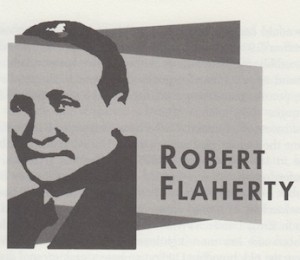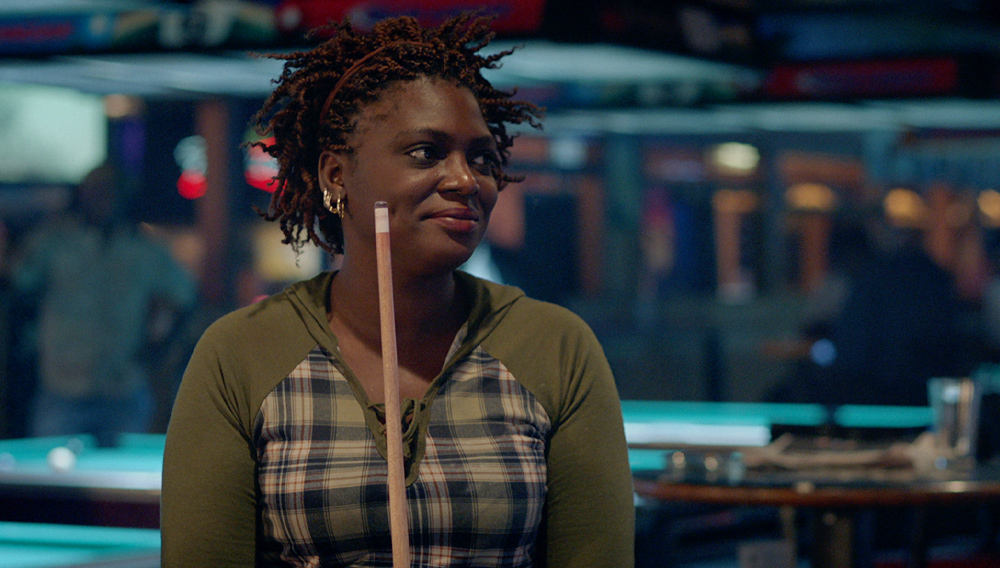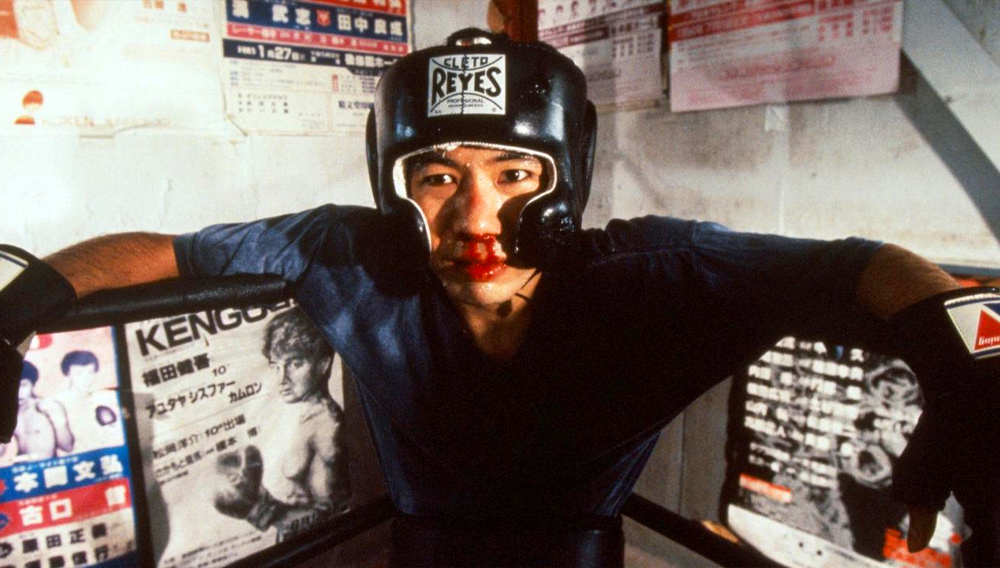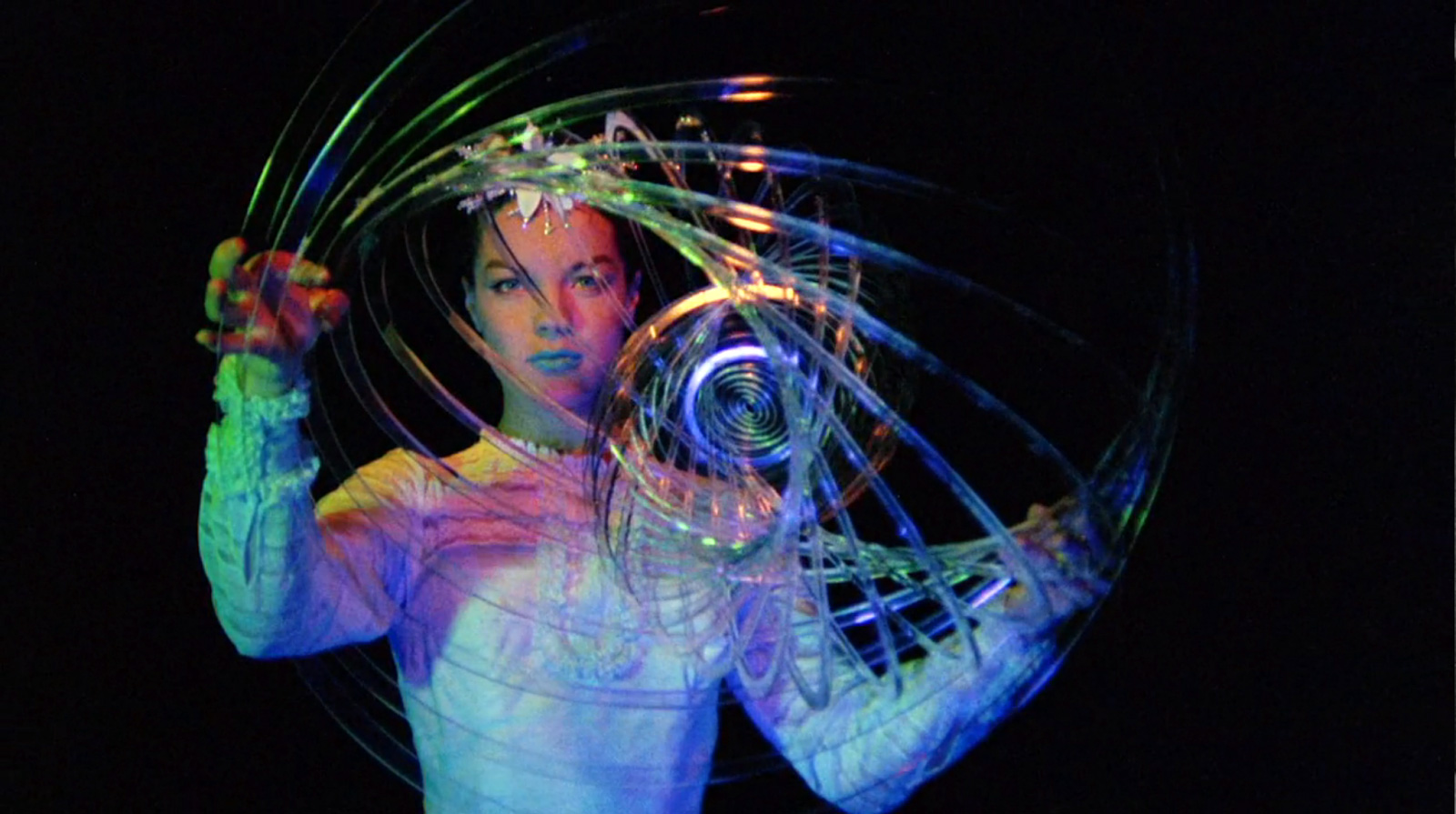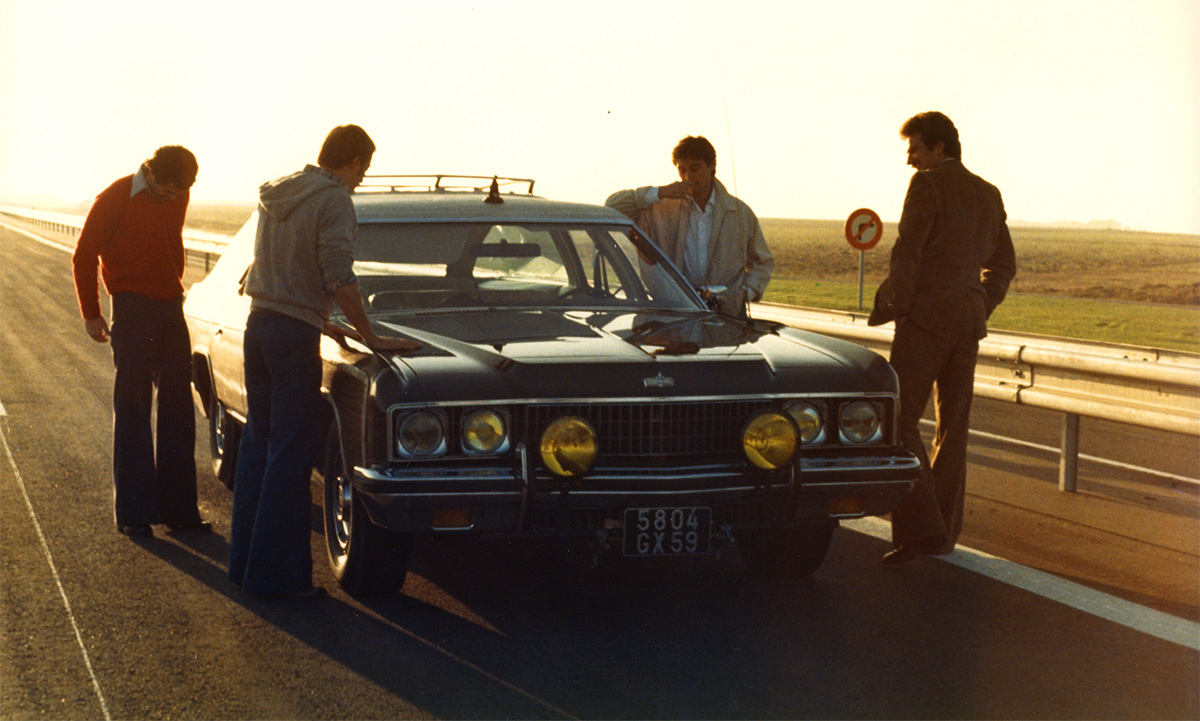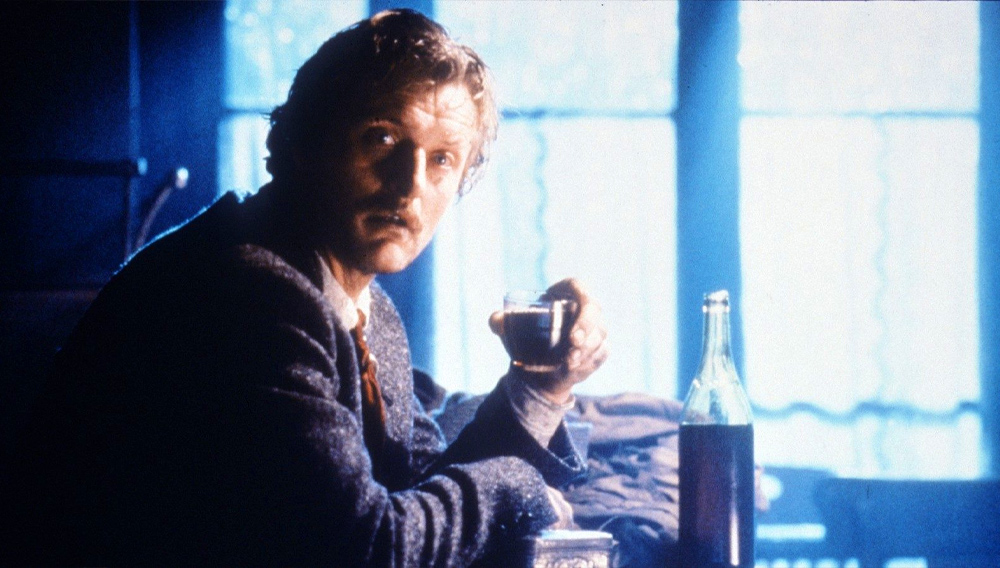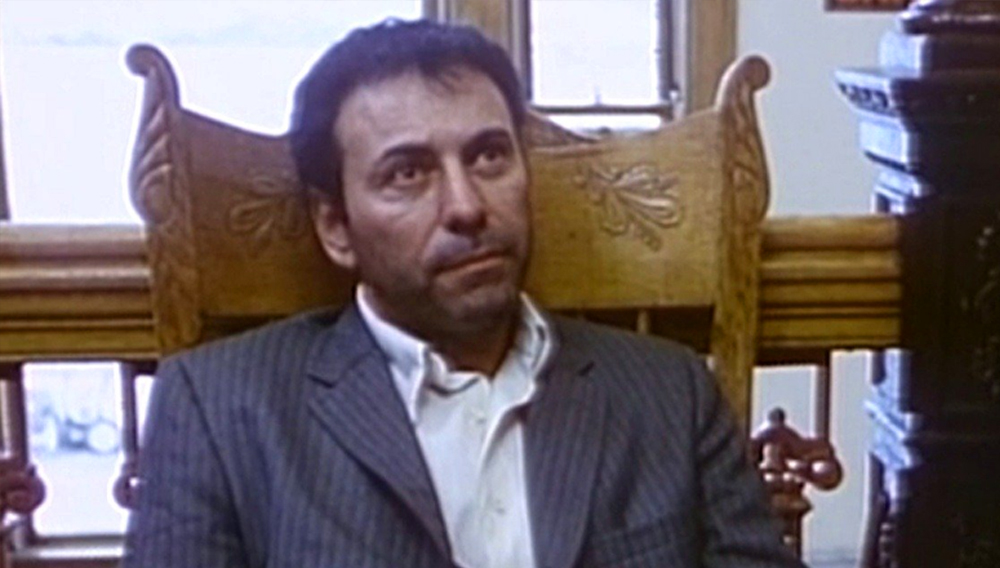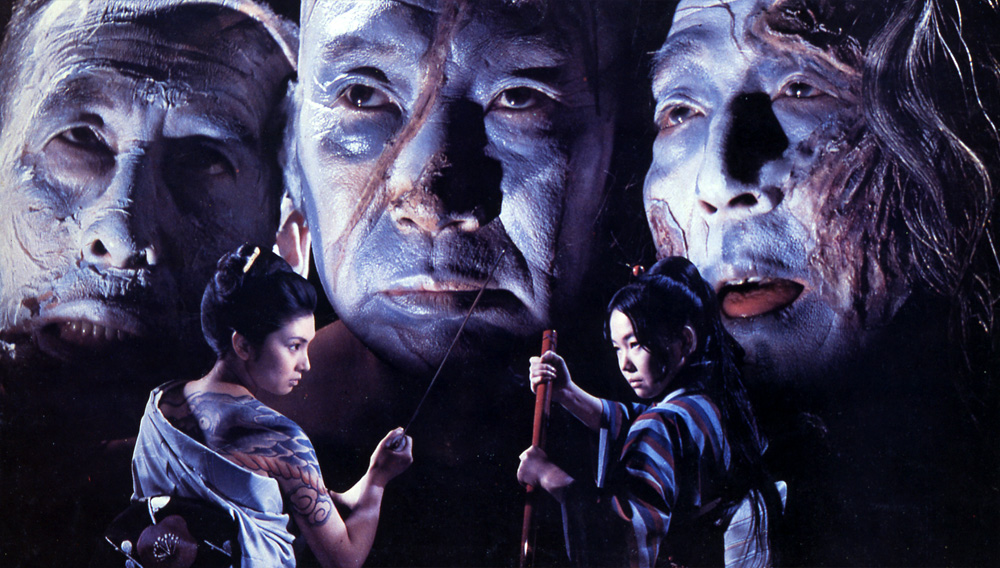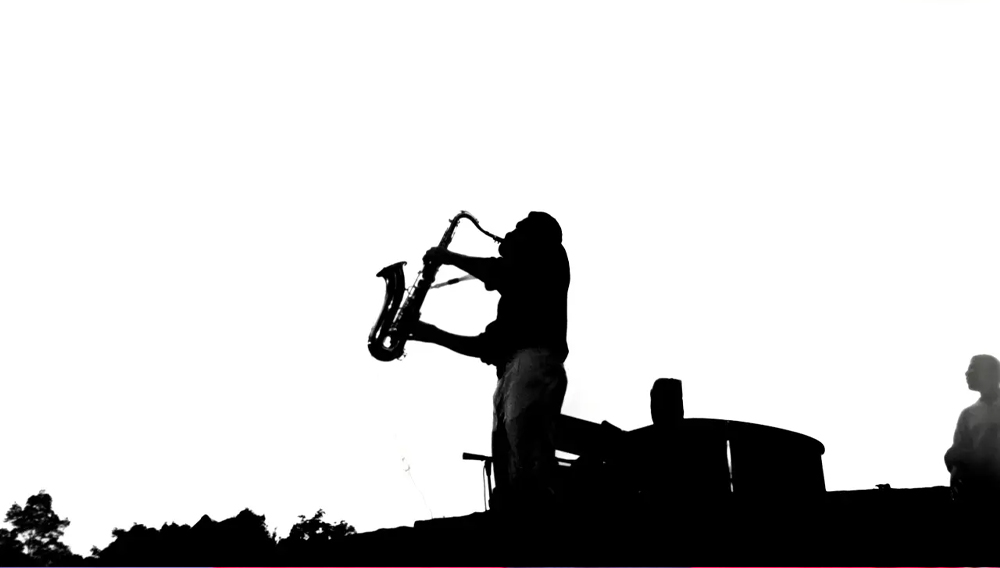Born: February 16, 1884, Iron Mountain, MI
Died: July 23, 1951, Dummerston, VT
Flaherty edited his raw films into a new and creative experience.
—Frank Manchel
Working as a surveyor and mapmaker for a fur company, Robert Flaherty often brought his trunk of amateur photography equipment with him during explorations of the Belcher Islands in 1917. When the company purchased a motion picture camera, Flaherty showed enthusiasm for its possibilities and carried it with him throughout the Arctic. He would use it to become the first man to popularize a form and style of shooting known as documentary filmmaking.
The Film 100
1. W.K. Laurie Dickson
2 Edwin S. Porter
3. Charlie Chaplin
4. Mary Pickford
5. Orson Welles
6. Alfred Hitchcock
7. Walt Disney
8. D.W. Griffith
9. Will Hays
10 Thomas Edison
11. John Wayne
12. J.R. Bray
13. Billy Bitzer
14. Jesse Lasky
15. George Eastman
16. Sergei Eisenstein
17. André Bazin
18. Irving Thalberg
19. Thomas Ince
20. Marlon Brando
21. Louis B. Mayer
22. Greta Garbo
23. Robert Flaherty
24. Lon Chaney
25. Anita Loos
26. George Méliès
27. Adolph Zukor
28. John Gilbert
29. Max Fleischer
30. John Ford
31. William Fox
32. George Lucas
33. Linwood Gale Dunn
34. Eadweard Muybridge
35. Katharine Hepburn
36. Winsor McCay
37. Stanley Kubrick
38. Buster Keaton
39. James Agee
40. Fritz Lang
41. Marcus Loew
42. Cedric Gibbons
43. James Cagney
44. Ben Hecht
45. Ingmar Bergman
46. Humphrey Bogart
47. Leon Schlesinger
48. Louella Parsons
49. Roger Corman
50. Edith Head
51. Bernard Herrmann
52. Gary Cooper
53. Mike Todd
54. Ernst Lubitsch
55. Sidney Poitier
56. Saul Bass
57. Billy Wilder
58. Bette Davis
59. Erich von Stroheim
60. Max Factor
61. Auguste and Louis Lumière
62. Woody Allen
63. Clark Gable
64. David O. Selznick
65. Gregg Toland
66. Lillian Gish
67. William Cameron Menzies
68. Lucille Ball
69. Samuel Rothafel
70. Akira Kurosawa
71. Marilyn Monroe
72. Vittorio De Sica
73. Natalie Kalmus
74. Gene Siskel and Roger Ebert
75. Willis O’Brien
76. Shirley Temple
77. Yakima Canutt
78. Sam Peckinpah
79. Jackie Coogan
80. Federico Fellini
81. Leni Riefenstahl
82. Steven Spielberg
83. Sam Warner
84. Jean-Luc Godard
85. Robert De Niro
86. Fred Astaire
87. Francis Ford Coppola
88. Ted Turner
89. Clint Eastwood
90. Dalton Trumbo
91. Dennis Hopper
92. Richard Hollingshead
93. Melvin Van Peebles
94. John Chambers
95. Mack Sennett
96. Martin Scorsese
97. Karl Struss
98. Busby Berkeley
99. John Hubley
100. John Cassavetes
He shot his first film of Eskimo life for a personal project in 1919, using a makeshift film-developing lab in his Hudson Bay cabin. He would start a small log fire to heat his processing chemicals to an exact temperature for successful processing of the negatives. Flaherty learned the mechanics of his equipment through necessity; the moist weather conditions forced him to disassemble the camera and wipe away any condensation before using it again. He had collected nearly seventy thousand feet of film when a cigarette butt accidentally ignited the nitrates in the film canisters, destroying everything. Flaherty, intent on re-creating his movie, returned in 1921 and befriended a village of natives while he filmed their daily activities for one year.
The edited result was the sixty-nine-minute Nanook of the North (1922), a painstaking chronicle of an Eskimo family’s struggle for survival. Filming the daily life of hunter Nanook the Bear, Flaherty captured poignant moments of the children at play with their father, the hunters chasing down a walrus, the fighting dogs who keep their master company and the grueling procedure of building an igloo from scratch. Using only simple camera techniques such as close-ups, tilting and panning, Flaherty captured scenes of Nanook at a traders’ outpost, investigating a gramophone record by biting its edge, and he juxtaposed those shots with images of Nanook biting the fishes he catches and kills with his teeth. The most compelling sequence comes at the film’s finale; a hunt for the Great Seal takes viewers across rushing waves with the Eskimos in their kayaks.
Flaherty staged many of the scenes to give Nanook a narrative structure. His clever selection of special orthochromatic stock was perfect for capturing the blue-green tones of Arctic life. And though he established many long-standing conventions of documentary filmmaking, he manipulated many of the situations he was filming and paid almost all of his subjects to perform their normal routines. Flaherty even instructed the Eskimos to create an oversized igloo without a ceiling so that he could capture their “natural” habitat with enough sunlight for proper exposures.
Nanook became the first travelogue feature film to claim international success. British critic John Grierson would later coin the term “documentary film” in a 1926 essay examining Nanook, and Flaherty would forever carry the moniker “the father of the documentary.” Flaherty became a celebrity in Hollywood, and studios were eager to finance explorations of other cultures. Audiences craved more information about the unassuming hunter and his family, but as Flaherty documented in his book My Eskimo Friends (1924) Nanook had starved to death on a grueling deer hunt long before the film made its debut.
Paramount agreed to send Flaherty to Polynesia for another documentary, Moana (1925). An important development in Moana was the application of panchromatic film, which was first used here in feature length and later became the industry standard; Flaherty chose it not for technical reasons but simply because he liked the way the Samoans’ skin looked in the experimental emulsion used in developing it. Moana was at first lauded by critics until it became evident that Flaherty was not a pure documentarist. He was making his features more attractive by manipulating his subjects and their settings. Like filmmaker Leni Riefenstahl, Flaherty learned a bitter lesson about the social responsibility that audiences assign to them. When he was justly attacked by anthropologists for making a poetic fantasy rather than an accurate representation of island life, Flaherty changed his approach completely.
He collaborated with W.S. Van Dyke and F.W. Murnau on more narrative features, including White Shadows in the South Seas (1928) and Tabu (1931), using scenarios to guide the filming. He rejected large crews and big budgets and longed for a personal, simple process, all the time making significant and influential advancements in documentary filmmaking. His most successful film, Man of Aran (1934), watched an Irish fisherman’s daily work and was recognized by historians as his most accurate account.
As his films were seen internationally, he became a popular figure in Europe and was introduced to filmmakers wherever he went. Flaherty was instrumental in helping Sergei Eisenstein bring his masterpiece Battleship Potemkin (1925) to the United States. He also introduced the Russian director to admirers Charlie Chaplin, D.W. Griffith and others. The challenge for Flaherty came when movies went to sound and he was forced to write traditional scripts and record narrations for his films. Silent movies were no longer acceptable to paying audiences, and his films ceased to be popular. Hollywood studios thought it was a reflection of the subject matter Flaherty was choosing.
Returning to America in the forties, Flaherty was reduced to taking grants from the U.S. Information Service to make public information films for the Mental Health Film Board and private commissions from Standard Oil to make, respectively, The Land (1942) and Louisiana Story (1948). These films opened new markets for documentary films, providing a generation of amateur directors an opportunity to seek corporate funds for their projects.
Flaherty’s position in film history is firmly rooted; as the father of the documentary film, his ignorance of editing and techniques was overlooked, and his natural instincts are still the ideal among documentary films. His inventiveness and persistent searches for foreign subject matter have sparked the imagination of filmmakers since he first took to the Arctic ice. Nanook still stands as the most vivid and powerful example of how films can connect cultures and introduce moviegoers to distant, mysterious lands. It has been consistently listed as the single most inspirational work in documentary filmmaking.
To read all the republished articles from ‘The Film 100,’ as well as the complete list of 100 most influential people in the history of the movies, go to Reintroducing the Film 100 here on Keyframe.


